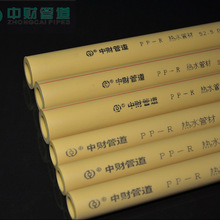Throttling nuclear power production could lead to cheaper, greener energy
The 99 nuclear power plants on US soil provide nearly 20 percent of the country's energy needs and have been operating at an increasingly high capacity, from 50 percent in the early 70s, to 70 percent in the early 90s, and keeping above 90 percent since 2002. However, according to new research from MIT and the Argonne National Laboratory, throttling down the capacity of nuclear power plants and adapting their output dynamically to compensate for the unpredictability of renewable sources could lead to savings for both consumers and nuclear plant owners.
Accordingto the study, nuclear power plants do not need to operate at maximumcapacity to maximize their efficiency. Rather, by adapting theiroutput dynamically to compensate for the unpredictability of clean energysources, they could create a symbiotic relationship that can minimizegreenhouse gas emissions while also decreasing the cost of electricity toconsumers as well as the cost of operations to power plant owners.
Theresearchers, led by principal investigator FrancescoGanda, developed a mathematical representation of the operationalconstraints of nuclear reactors and then used simulationmodels to estimate the cost of electricity generation, market prices,and the revenues to power plants.
"Nuclear power plants are governed by a different set of principles compared to other generators, and our approach enables the representation of these relationships in the analysis of power systems and electricity markets," said Ganda.
In particular, the study found that one of the most limiting constraints to flexible operations in nuclear power plants is the increased concentration of xenon (an effective neutron poison that lowers nuclear fuel reactivity) following every reactor power drop.
Despite this, the researchers conclude that nuclear plants can not only be efficient when notoperating at full output, but they are also also fully capable of responding dynamically to hourly electricity market prices and second-to-secondfrequency regulation needs.
Apaper describing the study appeared in a recent issue of the journalNuclear Technology.
Source:Argonne National Laboratory
The 99 nuclear power plants on US soil provide nearly 20 percent of the country's energy needs and have been operating at an increasingly high capacity, from 50 percent in the early 70s, to 70 percent in the early 90s, and keeping above 90 percent since 2002. However, according to new research from MIT and the Argonne National Laboratory, throttling down the capacity of nuclear power plants and adapting their output dynamically to compensate for the unpredictability of renewable sources could lead to savings for both consumers and nuclear plant owners.
Accordingto the study, nuclear power plants do not need to operate at maximumcapacity to maximize their efficiency. Rather, by adapting theiroutput dynamically to compensate for the unpredictability of clean energysources, they could create a symbiotic relationship that can minimizegreenhouse gas emissions while also decreasing the cost of electricity toconsumers as well as the cost of operations to power plant owners.
Theresearchers, led by principal investigator FrancescoGanda, developed a mathematical representation of the operationalconstraints of nuclear reactors and then used simulationmodels to estimate the cost of electricity generation, market prices,and the revenues to power plants.
"Nuclear power plants are governed by a different set of principles compared to other generators, and our approach enables the representation of these relationships in the analysis of power systems and electricity markets," said Ganda.
In particular, the study found that one of the most limiting constraints to flexible operations in nuclear power plants is the increased concentration of xenon (an effective neutron poison that lowers nuclear fuel reactivity) following every reactor power drop.
Despite this, the researchers conclude that nuclear plants can not only be efficient when notoperating at full output, but they are also also fully capable of responding dynamically to hourly electricity market prices and second-to-secondfrequency regulation needs.
Apaper describing the study appeared in a recent issue of the journalNuclear Technology.
Source:Argonne National Laboratory
(责任编辑:行业动态)
-
 By the time I tapped out of Persona 5after 60 hours of a massive high school adventure that I was en
...[详细]
By the time I tapped out of Persona 5after 60 hours of a massive high school adventure that I was en
...[详细]
-
 郭富城力挺方媛没整容据香港媒体报道,现年51岁的天王郭富城与交往已久的29岁内地模特儿女友方媛(Moka)申请注册结婚,有传城城将于下月中在香港举行婚礼。DJ梁泰来在电台节目中爆料指出郭富城身边的朋友
...[详细]
郭富城力挺方媛没整容据香港媒体报道,现年51岁的天王郭富城与交往已久的29岁内地模特儿女友方媛(Moka)申请注册结婚,有传城城将于下月中在香港举行婚礼。DJ梁泰来在电台节目中爆料指出郭富城身边的朋友
...[详细]
-
 昨天凌晨,法国和德国半决赛,东道主法国队2:0淘汰德国队,将与葡萄牙争夺冠军。昨晚CCTV《豪门盛宴》栏目组特邀法国队球迷、著名歌手谭晶现场演唱1998年法国世界杯的主题曲《生命之杯》。身着靓丽的短裙
...[详细]
昨天凌晨,法国和德国半决赛,东道主法国队2:0淘汰德国队,将与葡萄牙争夺冠军。昨晚CCTV《豪门盛宴》栏目组特邀法国队球迷、著名歌手谭晶现场演唱1998年法国世界杯的主题曲《生命之杯》。身着靓丽的短裙
...[详细]
-
 由周星驰、徐克联手打造的电影《西游伏妖篇》将于大年初一全国上映。近日,导演徐克携主演王丽坤来到济南为影片造势。对与“喜剧之王”周星驰联手共谱西游续曲,“武侠之王&r
...[详细]
由周星驰、徐克联手打造的电影《西游伏妖篇》将于大年初一全国上映。近日,导演徐克携主演王丽坤来到济南为影片造势。对与“喜剧之王”周星驰联手共谱西游续曲,“武侠之王&r
...[详细]
-
Which is Faster for Gaming, Windows 10 or Windows 11?
Which is faster for gaming, Windows 10 or Windows 11? That's a question we've noticed people has kep ...[详细]
-
 日前,2017年全国少儿游泳冠军赛(小年龄组)在烟台市游泳跳水馆圆满落下帷幕,经过四天的激战,山东队以28金32银24铜位列奖牌榜第一位。其中,青岛市羽毛球游泳运动管理中心的小运动员们发挥出色,为山东
...[详细]
日前,2017年全国少儿游泳冠军赛(小年龄组)在烟台市游泳跳水馆圆满落下帷幕,经过四天的激战,山东队以28金32银24铜位列奖牌榜第一位。其中,青岛市羽毛球游泳运动管理中心的小运动员们发挥出色,为山东
...[详细]
-
 886号巴士换“新衣”,“高桂”年菜畅游广州_南方+_南方plus冬至阳生,瑞龙送福。近日,在距离龙年新春不到1个月的时候,广州886号巴士贴上了高要年菜主题“车衣”,从南悦花苑总站出发,开往兴民路总
...[详细]
886号巴士换“新衣”,“高桂”年菜畅游广州_南方+_南方plus冬至阳生,瑞龙送福。近日,在距离龙年新春不到1个月的时候,广州886号巴士贴上了高要年菜主题“车衣”,从南悦花苑总站出发,开往兴民路总
...[详细]
-
 本报讯4月18日下午,市委书记李酌在雅会见四川科伦药业股份有限公司董事长刘革新。双方围绕持续深化战略合作,资源共享、优势互补,在市场拓展、医药贸易、校企合作等方面共同发力,促进地企互利共赢高质量发展等
...[详细]
本报讯4月18日下午,市委书记李酌在雅会见四川科伦药业股份有限公司董事长刘革新。双方围绕持续深化战略合作,资源共享、优势互补,在市场拓展、医药贸易、校企合作等方面共同发力,促进地企互利共赢高质量发展等
...[详细]
-
 South Korean table tennis player Shin Yu-bin eats a banana before her women's singles semifinal
...[详细]
South Korean table tennis player Shin Yu-bin eats a banana before her women's singles semifinal
...[详细]
-
 本报讯4月22日,雅安市商业银行向四川雅安安山钢铁有限公司发放“绿易贷”1000万元。这是全省首笔“低碳贷”成功落地。“银行和我们对接后,立即开辟绿色通道,提高贷款审批速度,仅一周就发放了贷款。”四川
...[详细]
本报讯4月22日,雅安市商业银行向四川雅安安山钢铁有限公司发放“绿易贷”1000万元。这是全省首笔“低碳贷”成功落地。“银行和我们对接后,立即开辟绿色通道,提高贷款审批速度,仅一周就发放了贷款。”四川
...[详细]

 42鏀簞鎴峰墽鍥㈤椆鍏冨 骞冲害杩炵画24骞翠妇鍔炴枃鑹烘眹婕擾涓浗灞变笢缃慱闈掑矝
42鏀簞鎴峰墽鍥㈤椆鍏冨 骞冲害杩炵画24骞翠妇鍔炴枃鑹烘眹婕擾涓浗灞变笢缃慱闈掑矝 友人怀疑方媛整容 郭富城力挺女友“纯天然”
友人怀疑方媛整容 郭富城力挺女友“纯天然” 福字到底正着贴还是倒着贴?这下终于弄明白了
福字到底正着贴还是倒着贴?这下终于弄明白了 Yoon, US Senate's armed service committee chief discuss alliance, N.K. threats
Yoon, US Senate's armed service committee chief discuss alliance, N.K. threats
